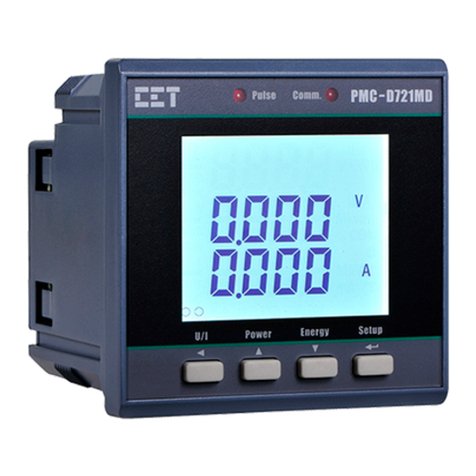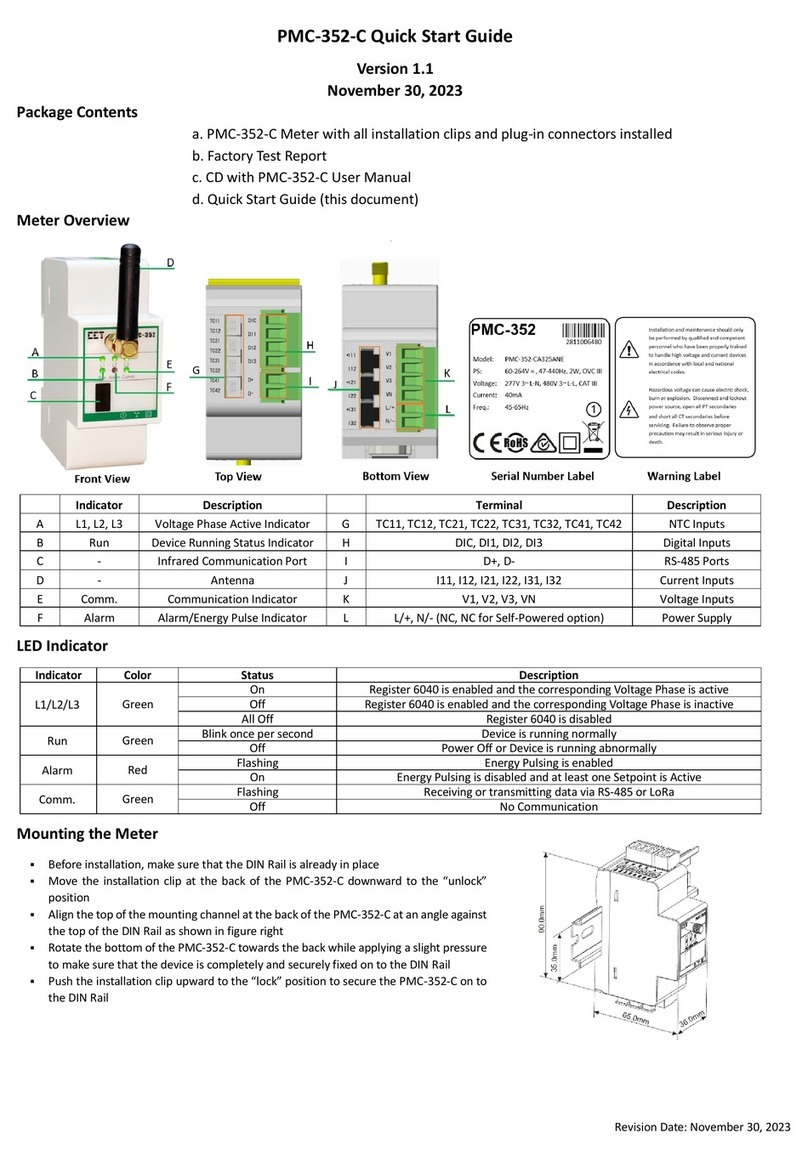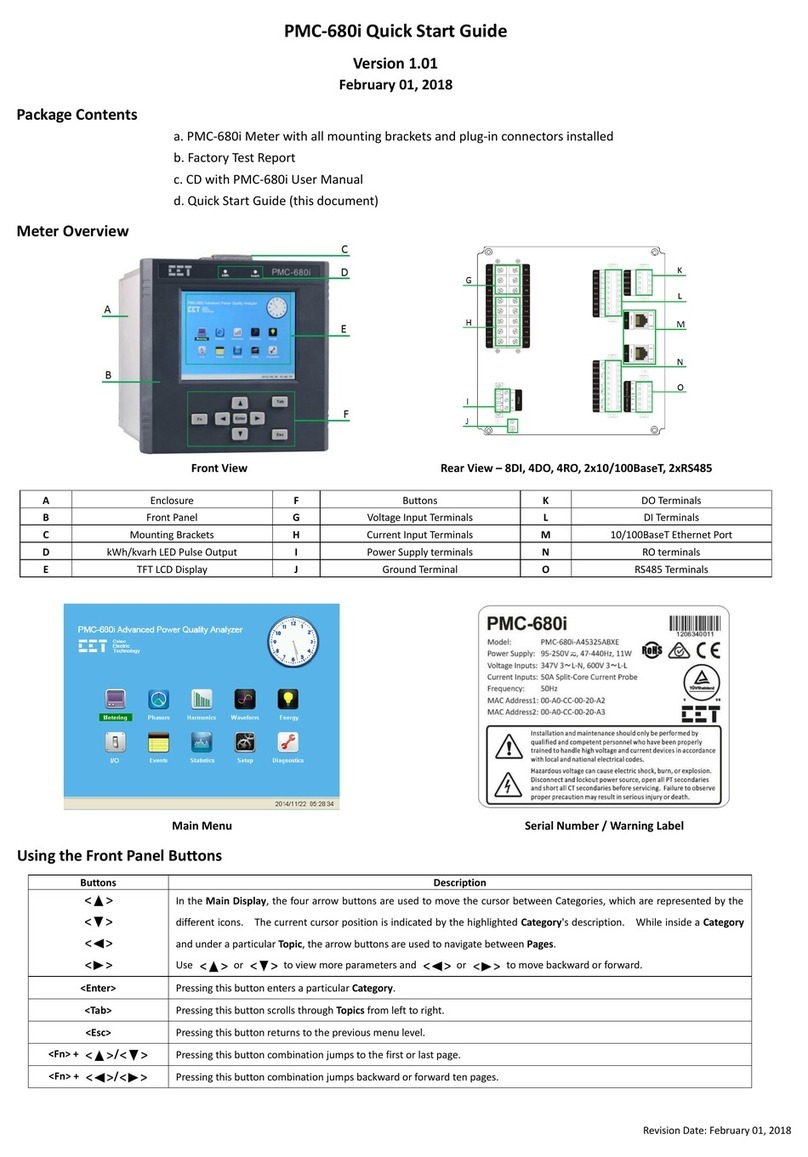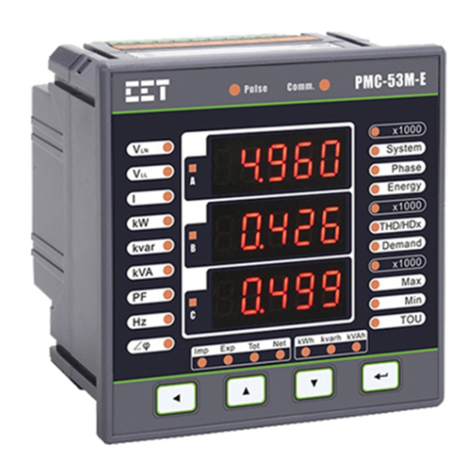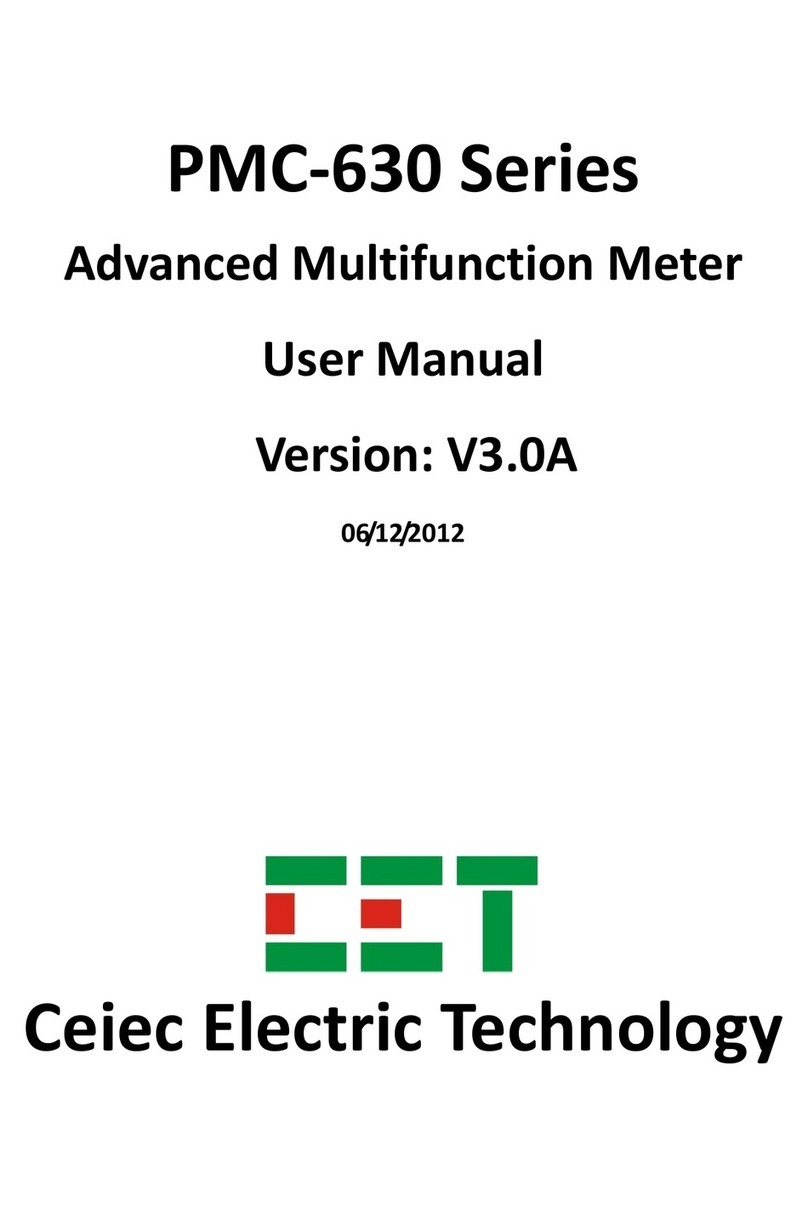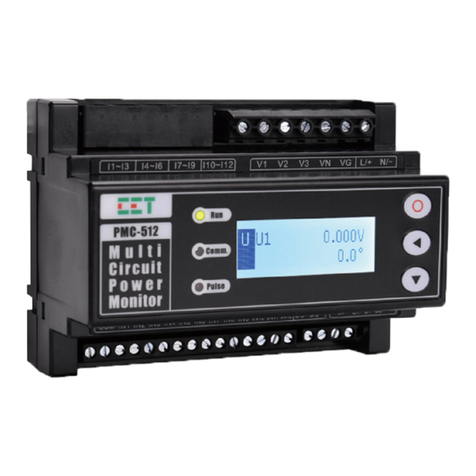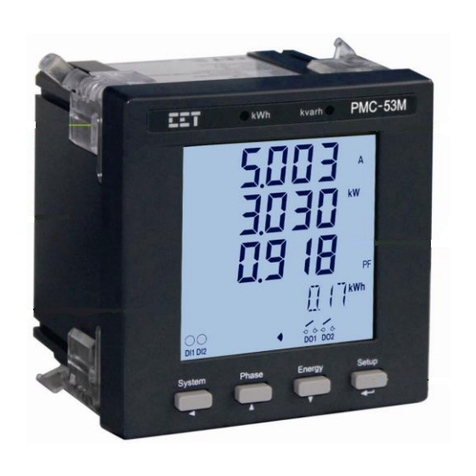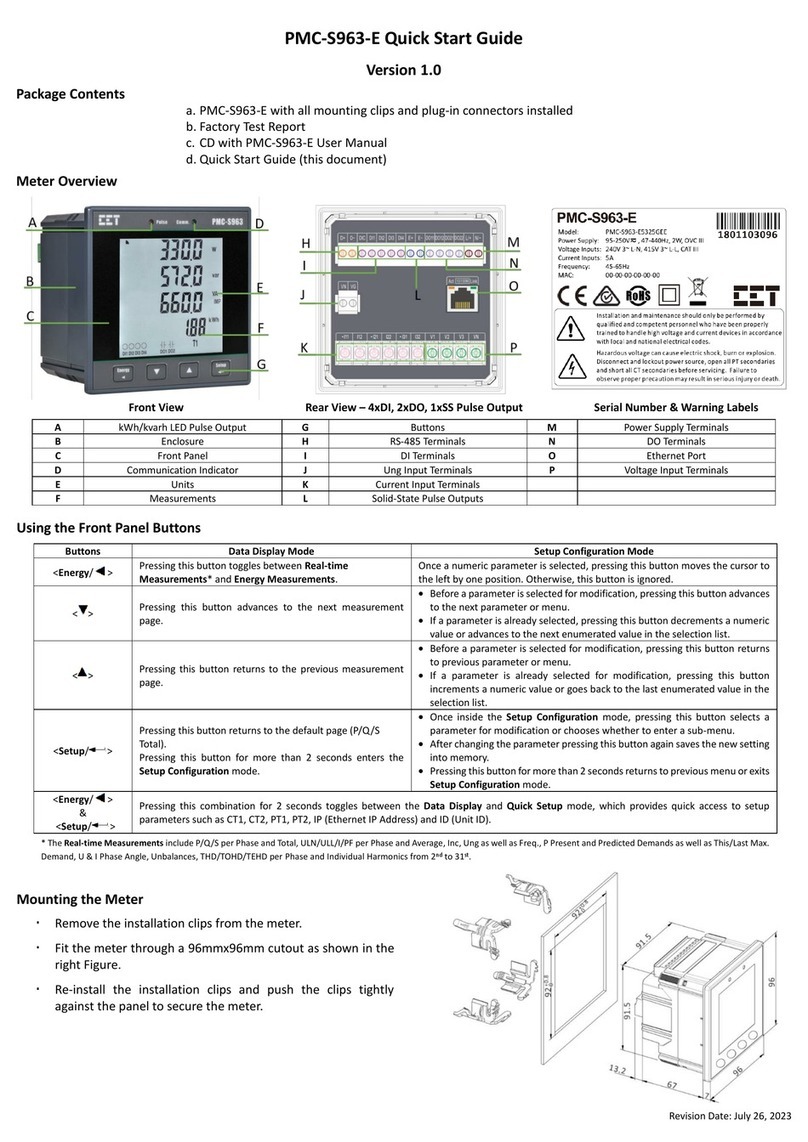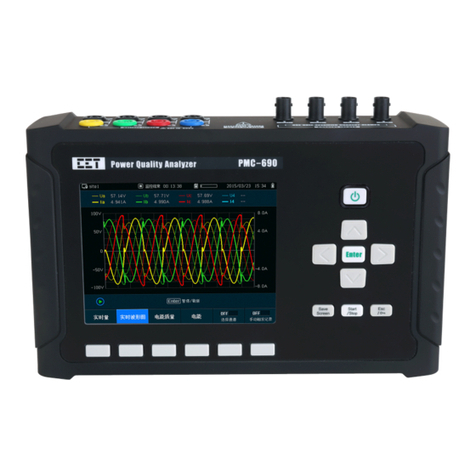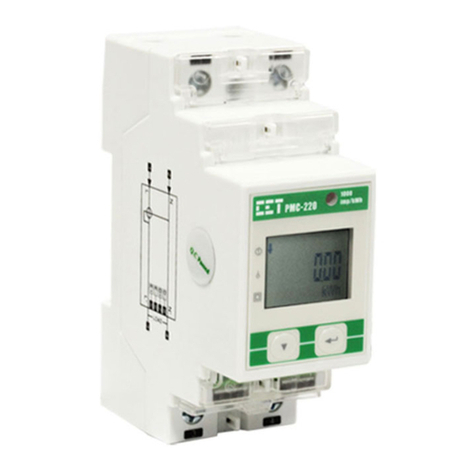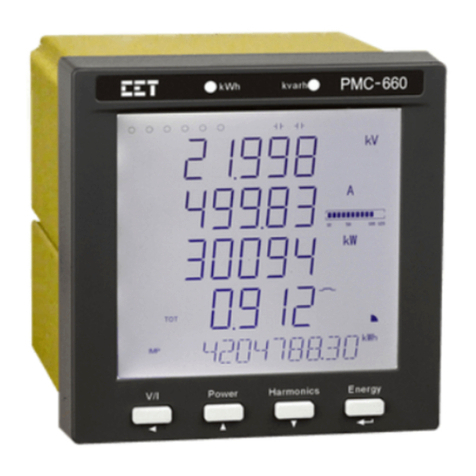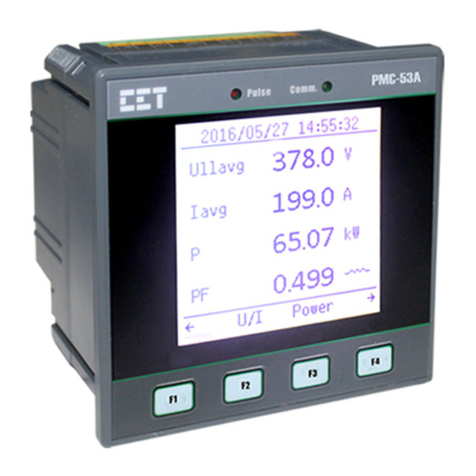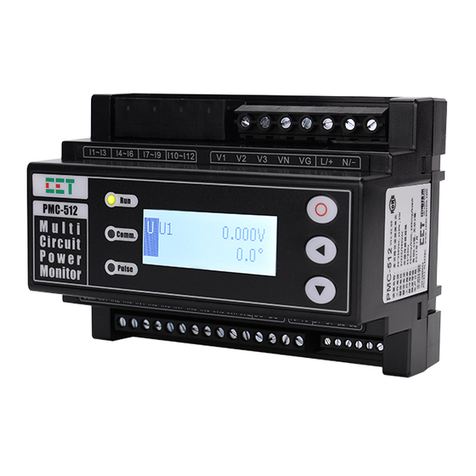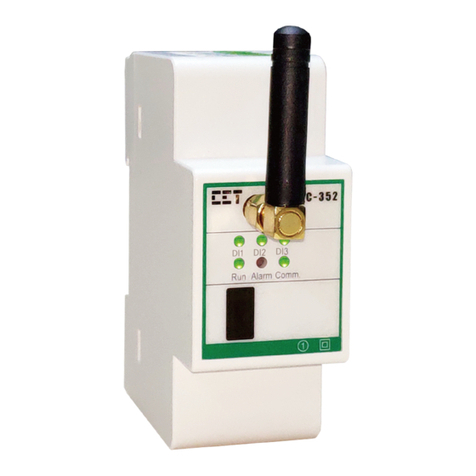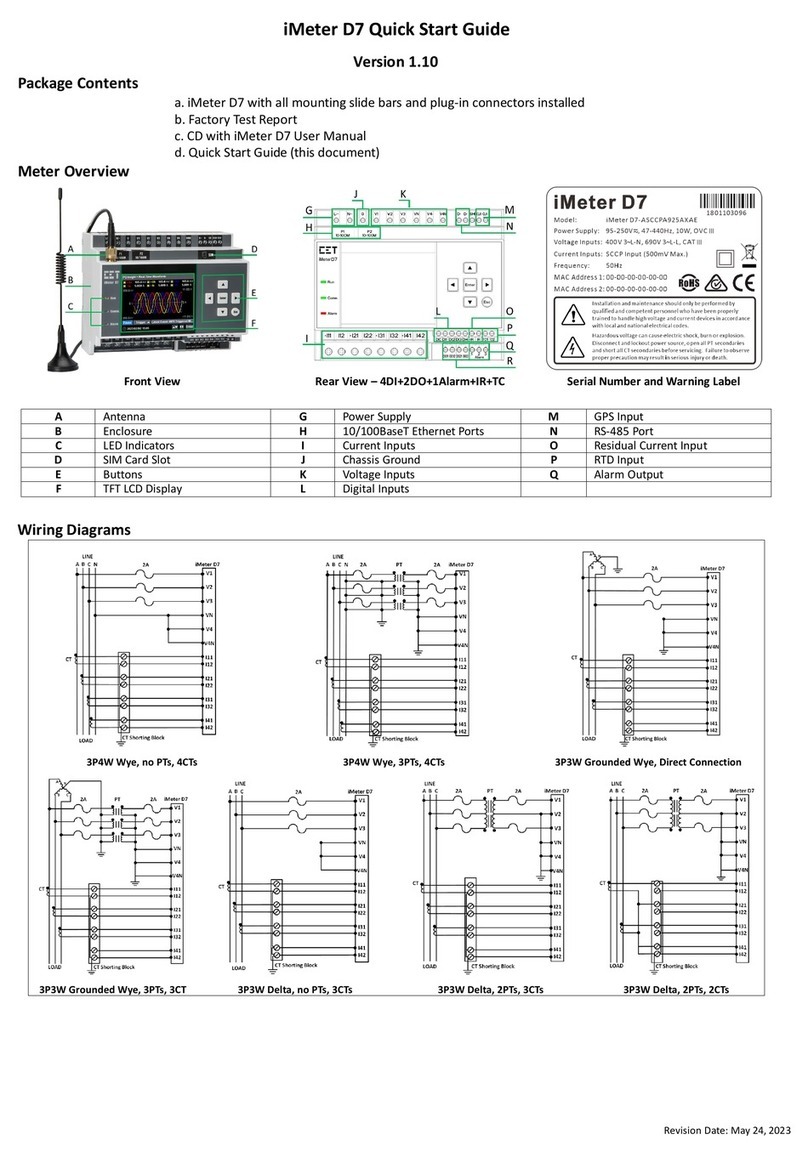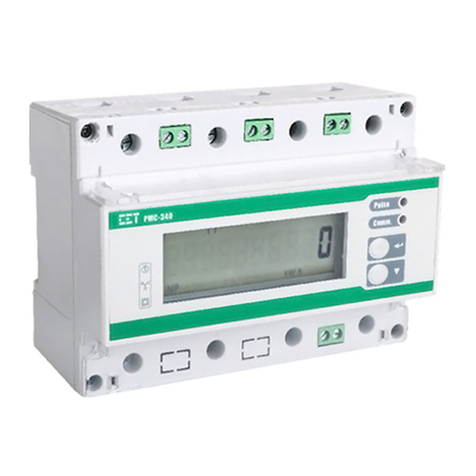CET Electric Technology
II
4.4 Setpoints................................................................................................................................................. 62
4.5 Logical Module........................................................................................................................................ 64
4.6 Logging.................................................................................................................................................... 65
4.6.1 Max./Min. Log.............................................................................................................................. 65
4.6.2 Peak Demand Log ........................................................................................................................ 65
4.6.3 Interval Energy Recorder (IER) Log............................................................................................... 65
4.6.4 Waveform Recorder (WFR) Log.................................................................................................... 66
4.6.5 PQ Log.......................................................................................................................................... 66
4.6.6 SOE Log ........................................................................................................................................ 66
4.6.7 Data Recorder (DR) Log................................................................................................................ 66
4.6.8 Time of Use (TOU)........................................................................................................................ 67
4.7 Time Synchronization.............................................................................................................................. 68
4.8 Alarm Email............................................................................................................................................. 69
4.9 Ethernet Gateway ................................................................................................................................... 72
Chapter 5 Modbus Map........................................................................................................................................ 73
5.1 Basic Measurements............................................................................................................................... 73
5.2 Energy Measurements............................................................................................................................ 75
5.2.1 Total Energy Measurements ........................................................................................................ 75
5.2.2 Phase A Energy Measurements ................................................................................................... 75
5.2.3 Phase B Energy Measurements.................................................................................................... 76
5.2.4 Phase C Energy Measurements.................................................................................................... 76
5.2.5 TOU Energy Measurements ......................................................................................................... 77
5.2.6 Interval Energy Measurements.................................................................................................... 78
5.3 Pulse Counter.......................................................................................................................................... 78
5.4 Harmonic Measurements ....................................................................................................................... 78
5.4.1 Fundamental (Displacement) Measurements ............................................................................. 78
5.4.2 THD/TOHD/TEHD Measurements................................................................................................ 79
5.4.3 TDD Measurements ..................................................................................................................... 80
5.5 High-speed Measurements..................................................................................................................... 80
5.6 Event Counter ......................................................................................................................................... 81
5.7 Demand Measurements ......................................................................................................................... 81
5.7.1 Present Demand .......................................................................................................................... 81
5.7.2 Predicted Demand ....................................................................................................................... 82
5.7.3 Max./Min. per Demand Period.................................................................................................... 82
5.7.4 Peak Demand Log of This Month (Since Last Reset) .................................................................... 84
5.7.5 Peak Demand Log of Last Month (Before Last Reset).................................................................. 84
5.7.6 Demand Data Structure ............................................................................................................... 84
5.8 Log Register............................................................................................................................................. 84
5.8.1 Max./Min. Log.............................................................................................................................. 84
5.8.2 SOE Log ........................................................................................................................................ 87
5.8.4 PQ Log.......................................................................................................................................... 87
5.9 Log Data Format...................................................................................................................................... 89
5.9.1 Read General Reference Packet Structure (Function Code 0x14)................................................ 89
5.9.2 Interval Energy Recorder Log Data Structure............................................................................... 89
5.9.3 Data Recorder Log Data Structure ............................................................................................... 90
5.9.4 Waveform Recorder Log Data Structure...................................................................................... 90
5.10 Device Setup ........................................................................................................................................ 90
5.10.1 Basic Setup................................................................................................................................. 90
5.10.2 Setpoint Setup ........................................................................................................................... 94
5.10.3 Logical Module Setup................................................................................................................. 96
5.10.4 Data Recorder Setup.................................................................................................................. 97
5.10.5 Interval Energy Recorder Setup Registers.................................................................................. 99
5.10.6 Waveform Recorder (WFR) Setup.............................................................................................. 99
5.10.7 TOU Setup................................................................................................................................ 100
5.10.8 DO Control ............................................................................................................................... 103
5.10.9 Clear/Reset Control.................................................................................................................. 104
5.11 Time ................................................................................................................................................... 104












